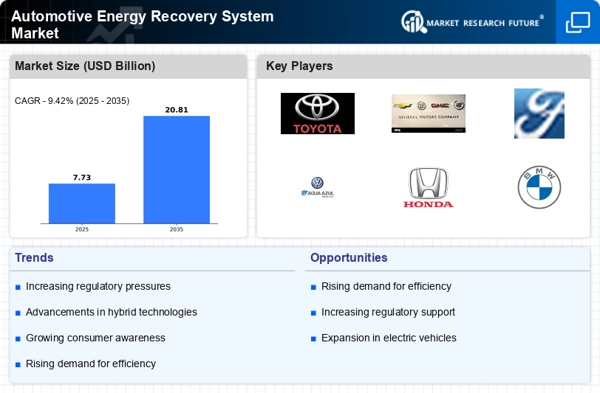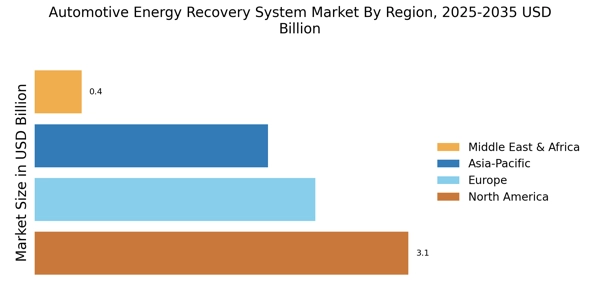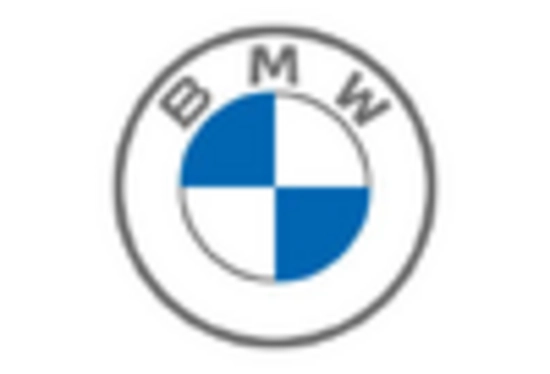The Automotive Energy Recovery System Market is currently characterized by a dynamic competitive landscape, driven by the increasing emphasis on sustainability and energy efficiency in the automotive sector. Major players such as Toyota Motor Corporation (Japan), General Motors Company (US), and Volkswagen AG (Germany) are at the forefront of this evolution, each adopting distinct strategies to enhance their market positioning. Toyota, for instance, continues to leverage its pioneering hybrid technology, focusing on integrating advanced energy recovery systems into its vehicles. Meanwhile, General Motors is heavily investing in electric vehicle (EV) technology, aiming to incorporate energy recovery systems that optimize battery performance and extend vehicle range. Volkswagen, on the other hand, is pursuing a strategy of regional expansion, particularly in Europe and North America, where it is enhancing its energy recovery capabilities to meet stringent regulatory standards.
In terms of business tactics, companies are increasingly localizing manufacturing and optimizing their supply chains to enhance efficiency and reduce costs. The market structure appears moderately fragmented, with several key players exerting considerable influence. This fragmentation allows for a variety of innovative solutions to emerge, as companies compete not only on product offerings but also on technological advancements and operational efficiencies.
In August 2025, Toyota Motor Corporation (Japan) announced a partnership with a leading battery manufacturer to develop next-generation energy recovery systems aimed at improving the efficiency of hybrid and electric vehicles. This collaboration is strategically significant as it positions Toyota to enhance its technological edge in energy recovery, potentially leading to improved vehicle performance and customer satisfaction.
In September 2025, General Motors Company (US) unveiled its latest energy recovery system integrated into its new line of electric vehicles, which reportedly increases energy efficiency by 15%. This development underscores GM's commitment to innovation and sustainability, aligning with global trends towards greener automotive solutions. The introduction of this technology is likely to bolster GM's competitive stance in the rapidly evolving EV market.
In July 2025, Volkswagen AG (Germany) launched a new initiative aimed at retrofitting existing models with advanced energy recovery systems. This move not only enhances the sustainability of its current fleet but also demonstrates Volkswagen's commitment to reducing the environmental impact of its vehicles. Such initiatives may attract environmentally conscious consumers and strengthen brand loyalty.
As of October 2025, the competitive trends in the Automotive Energy Recovery System Market are increasingly defined by digitalization, sustainability, and the integration of artificial intelligence. Strategic alliances among key players are shaping the landscape, fostering innovation and collaboration. Looking ahead, it is anticipated that competitive differentiation will evolve, shifting from traditional price-based competition to a focus on technological innovation, supply chain reliability, and sustainable practices. This transition is likely to redefine market dynamics, compelling companies to continuously innovate and adapt to changing consumer preferences.


















Leave a Comment